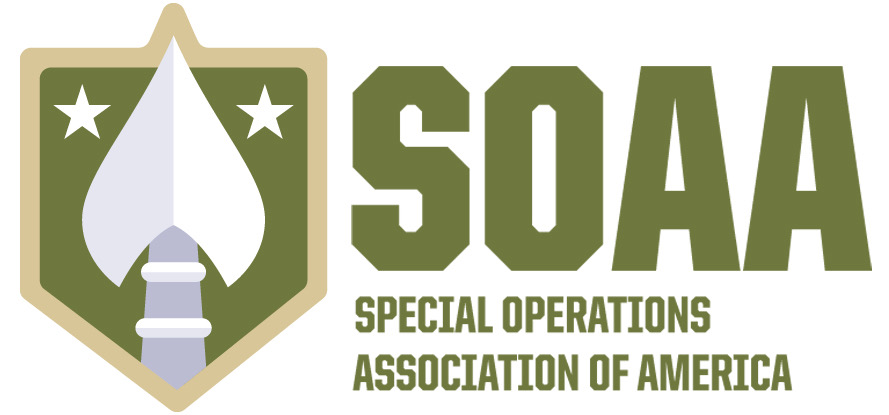SOAA Board member Eric Muschinski exemplifies the organization’s mission to keep America safe by spotlighting critical shortfalls in U.S. strategic mineral mining.
The last antimony smelter in the United States closed in 2002. For two decades, that barely mattered until it did.
Antimony hardens lead in armor-piercing ammunition. It fireproofs the interior of military aircraft. It’s embedded in night-vision systems, infrared sensors, and nuclear weapons. American defense contractors use roughly 600 metric tons annually. We produce none of it.
Last November, Beijing announced export restrictions on antimony. No fanfare. Just a quiet policy adjustment that gave China veto power over a critical input to American military readiness. America isn’t losing the rare earth race–it’s not even competing.
This is not a supply chain problem. This is a sovereignty problem.
Eric Muschinski has spent two decades in the natural resources sector, watching America’s strategic position deteriorate one closed mine at a time. While most investors focused on quarterly returns, he tracked something more fundamental: the slow-motion collapse of the industrial capacity that makes deterrence credible.
When China moved on antimony, Muschinski didn’t wait for a think tank report or a Congressional hearing. He brought the mining industry directly to the national security community. The Special Operations Association of America, an organization built by and for the people who understand what happens when logistics fail, provided the platform. The executives who showed up brought three decades of experience on six continents. Their message was blunt.
America has the resources. What it lacks is the system to access them–as permitting red tape is slowing the flow of capital into the ground.
The 29-Year Problem
Jon Cherry runs Perpetua Resources, which controls one of the largest antimony deposits in North America. His project in Idaho could supply one-third of U.S. demand. He’s been navigating federal permits for nearly a decade. “On average, it takes 29 years in the U.S. to go from discovery to production,” Cherry told the roundtable. “Only one country in the world is slower.”
Papua New Guinea.
The bureaucratic maze that creates this timeline isn’t accidental. It’s the result of overlapping jurisdictions: the Bureau of Land Management, the Forest Service, state regulators, federal agencies with competing mandates, operating without coordination or accountability. A project requiring approval from multiple agencies doesn’t get multiple timelines. It gets the slowest one, repeated.
Paul Cowley runs Phenom Resources. His team has waited over a year for permission to explore (not mine, explore) five acres of Nevada desert. “Thirty years ago, you could work with the Forest Service and get a permit in a reasonable time,” Cowley said. “Now one official can hold up a third of Nevada’s exploration projects.”
This is the opposite of strategic depth. It’s strategic paralysis, enforced by process.
Capital Goes Where It’s Welcome
Rob McEwen built mines on four continents before founding McEwen Mining. He knows what competitive jurisdictions look like. “Argentina cut its tax rate, removed currency controls, and signed 30-year stability pacts. Saudi Arabia welcomes mining investment with open arms.”
Billions in private capital are searching for mining opportunities. But money follows predictability, and America offers none. While U.S. projects sit in regulatory purgatory, investors fund Australian lithium, Canadian copper, and Argentine silver. The expertise follows the capital. The jobs follow the expertise.
The result is a feedback loop: fewer projects mean fewer trained professionals, which means less institutional knowledge, which makes new projects harder to execute even if permits eventually arrive.
Karl Hanneman, CEO of International Tower Hill Mines, described the workforce crisis simply: “We have the science and the know-how. What we lack is a system that lets qualified people apply it before the expertise disappears.”
Mining engineers, metallurgists, and geologists are aging out. Universities aren’t replacing them. The next generation is choosing software and finance over the industries that keep the defense base functional.
China doesn’t have this problem. Neither does Australia. Or Canada. Or Chile.
Delay as Strategy
In South Dakota, uranium geologist Mike Blady outlined a project trapped in procedural warfare. Out-of-state activists file appeals, each triggering additional review cycles. They don’t need to win the argument. They just need to run out the clock. “It’s unlike anything I’ve seen,” Blady said.
Every delay accomplishes two objectives: it drains private capital, and it deepens American dependence on foreign sources. For adversaries operating on decade-long strategic timelines, this is ideal. They don’t need to outcompete the United States militarily. They just need to wait while America’s industrial base atrophies.
This is what vulnerability looks like: not a sudden invasion, but a slow erosion of the capacity to act independently.
What Modern Mining Actually Looks Like
The environmental case against mining often relies on images from a century ago: open pits, toxic runoff, scarred landscapes. That’s not what contemporary operations look like.
McEwen’s Los Azules copper project in Argentina runs entirely on renewable energy. Modern mining uses precision extraction, closed-loop water systems, and environmental monitoring that would have been science fiction a generation ago. The conflict isn’t between mining and environmental protection. It’s between accountability and obstruction. “A deadline on paper means nothing if a bureaucrat can still stall you with one more study,” Cherry observed.
The question isn’t whether mining should be regulated. It’s whether regulation should have teeth that work in both directions, enforcing both environmental standards and timelines.
What Congress Can Do
The Department of Defense has begun treating mineral security as a strategic priority, granting Perpetua Resources $80 million to advance domestic antimony production. That’s a start. It’s not a system.
A Critical Minerals Acceleration Act should establish binding timelines, align federal agencies, and fund the technical workforce required for long-term production. The Departments of Defense, Interior, and Agriculture should jointly designate strategic mineral projects as essential infrastructure, on par with ports, power grids, and military installations.
That designation would clarify what should already be obvious: America will control the materials that power its defense, or it will depend on adversaries for permission to act.
The Choice
Every F-35, Patriot missile, and Virginia-class submarine starts with what comes out of the ground. Copper for electrical systems. Rare earths for guidance systems. Uranium for reactors. Antimony for munitions.
Beijing understands this. Moscow understands this. Riyadh and Buenos Aires understand this.
The question is whether Washington does.
Muschinski brought the mining industry to the table because he saw what policymakers were missing: the gap between America’s strategic ambitions and its industrial reality is widening. Every month of bureaucratic delay, every project abandoned to regulatory exhaustion, every mining engineer who retires without a replacement, it all compounds into dependence.
“This isn’t about politics,” Muschinski said. “It’s about survival. We either secure the resources that power our defense, or we depend on those who would use them against us.”
The Special Operations Association of America knows what happens when supply lines fail. Missions fail. People die. Deterrence collapses.
America doesn’t lack the resources to remain secure. It lacks the will to access them.
That’s a choice. And it’s reversible.
But only if it’s made before the next export restriction—and the one after that—turn dependence into surrender.
This article gleaned insights from six publicly traded mining companies–with a combined market capitalization over $5 Billion–with projects in various US states. We welcome anyone seeking a master class in this topic to watch this video.





